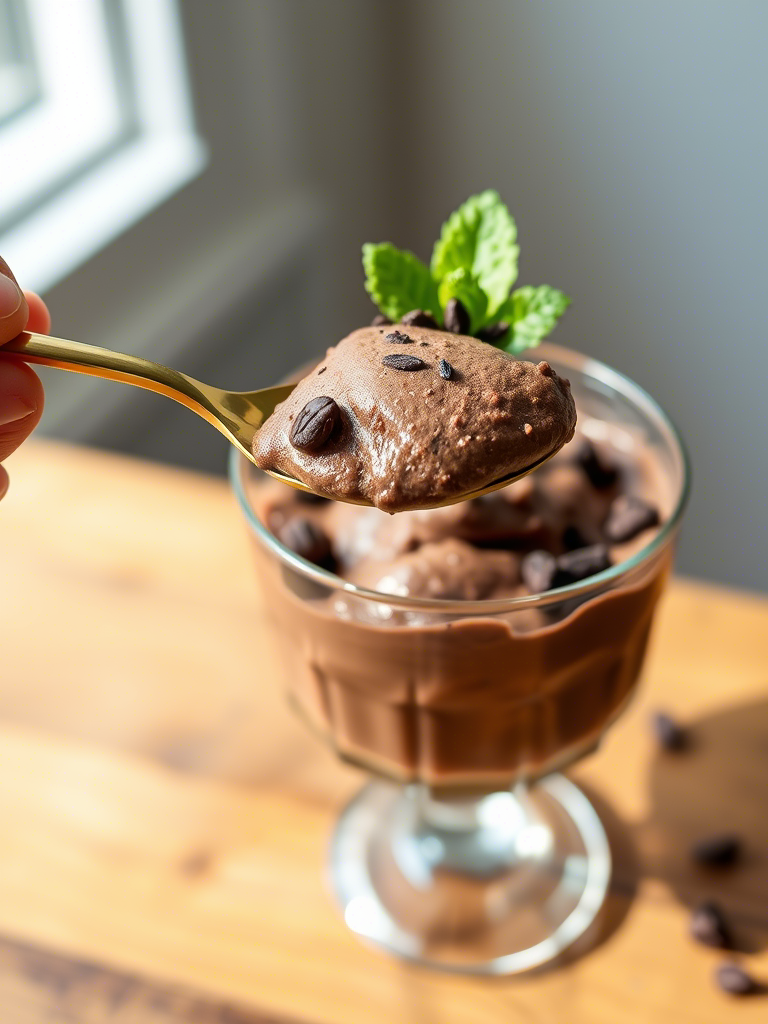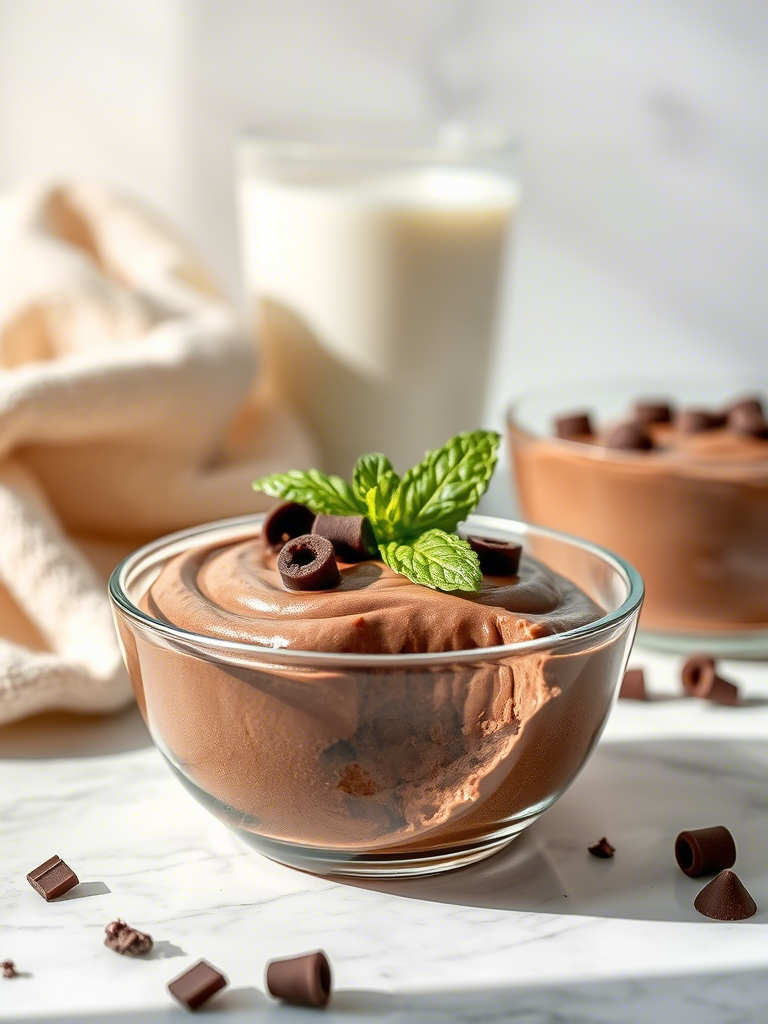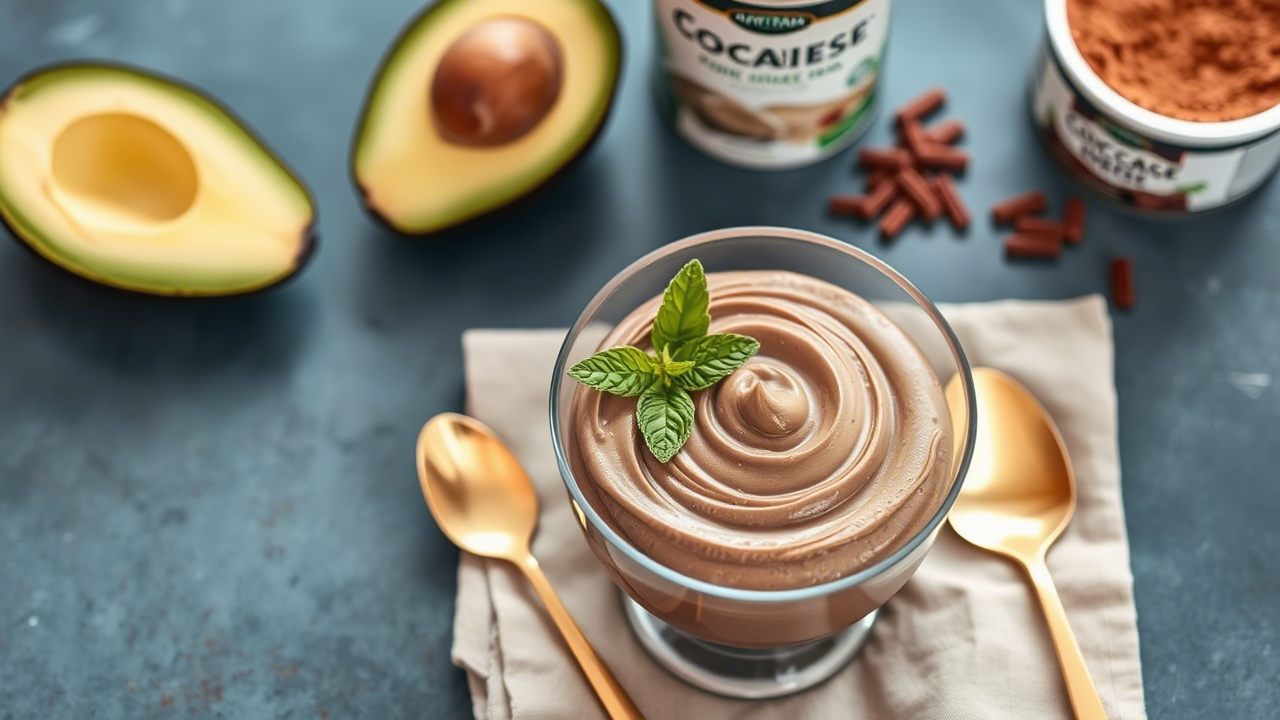The world’s got a sweet tooth problem. But it also has a blood sugar problem, a weight problem, a metabolism problem—and desserts are always sitting there looking guilty. Enter: Low-Carb Chocolate Cottage Cheese Mousse. Now that sounds like a contradiction trying to make peace with your cravings.
This isn’t your average mousse. It’s creamy, it’s decadent, it’s chocolate—but it’s also loaded with protein, low in sugar, and surprisingly simple to make. And no, it doesn’t taste like sadness or sacrifice. It tastes like dessert finally got smart.
If you’re in professional food service, nutrition, culinary R&D, or even performance-focused meal design, this mousse deserves a closer look. Not just for how it tastes, but for how it fits into today’s growing demand for functional desserts.
Why Low-Carb and Why Now?
Low-carb isn’t new. But it’s definitely having a more nuanced comeback.
From ketogenic diets to diabetic-friendly menus to intermittent fasting regimens, people are cutting carbs more mindfully than ever. A 2023 survey by the International Food Information Council showed that 17% of Americans actively follow a low-carb or keto-like eating pattern. Not just to lose weight—but to think clearer, sleep better, and stabilize energy levels throughout the day.
This means desserts, too, have to evolve. No more sugar bombs posing as “light treats.” Chefs, dietitians, and food scientists are all circling the same question: how do we make indulgence functional?
And that’s where cottage cheese walks in—quietly confident, protein-packed, and tragically misunderstood.
Cottage Cheese: The Unsung Hero of Smart Desserts
Cottage cheese used to get laughed out of the dessert world. “Too savory,” they’d say. “Too lumpy.” But that was before people figured out what a food processor can do. That was also before high-protein, high-satiety, and insulin-friendly became real dessert goals.
One cup of full-fat cottage cheese delivers around 25 grams of protein, almost zero sugar (especially if you go for unsweetened), and a creamy structure that’s begging to be blended. Think of it as mascarpone’s gym-going cousin.
Pro insight: Blending cottage cheese with cocoa and a touch of low-glycemic sweetener like allulose or erythritol creates a mousse texture that rivals the real thing. Better still—it holds up without gelatin or whipping cream, reducing prep time in professional kitchens.
You also skip the need to stabilize egg whites. Less mess, more shelf life. For commercial applications, that’s a win.
The Science of Chocolate Without Sugar Spikes
Dark chocolate, on its own, isn’t the villain. It’s the added sugar that ruins the romance.
Cocoa powder, especially the Dutch-processed kind, contains flavanols—antioxidants that support blood flow and may even improve brain function. But to keep it low-carb, we go unsweetened. Then balance it with stevia, monk fruit, or erythritol, depending on the texture and flavor profile you’re chasing.
Here’s a little chemistry that matters:
Erythritol doesn’t caramelize. Stevia can taste metallic if overused. Monk fruit tends to pair better with dairy-based desserts. Trial and error teaches you the sweet spot, literally.
Using unsweetened cocoa powder (1 tbsp ~1g net carbs) and high-quality vanilla extract can add depth that hides any tang from the cottage cheese. Don’t forget a pinch of salt. Salt opens flavor doors chocolate didn’t even know it had.
And professionals—please stop forgetting salt in desserts. It’s not optional. It’s architecture.

Recipe Framework (Not Formulaic, Just Practical)
You don’t need a Michelin-star setup here. You need precision with just enough room for play.
Base Ingredients
- 1 cup full-fat cottage cheese
- 2 tbsp unsweetened cocoa powder
- 2–3 tbsp powdered erythritol (or monk fruit blend)
- 1 tsp vanilla extract
- Pinch of salt
- Optional: 1 tbsp heavy cream or almond milk (for consistency)
Method
- Toss everything in a food processor. No patience? Use an immersion blender.
- Blend until silky smooth—no bumps, no grits, no cottage cheese personality left.
- Chill for 30 minutes or more for optimal texture.
Yield: Makes 2–3 servings, around 6g net carbs per serving, depending on the sweetener used.
This is a base. You can scale, pipe, freeze, or layer it into parfaits. Add espresso powder. Swirl in peanut butter. Fold in crushed walnuts. You’re not stuck.
And here’s the wild part—it stores well for up to 3 days, flavor improving with time. The cocoa and dairy bond more tightly as it rests.
Real-World Applications in Professional Kitchens
Hotels, spas, fitness cafés, and even airline menus are starting to sneak in high-protein desserts like this one.
In 2024, the Functional Food Global Market was valued at $280 billion and growing fast. Protein is a key driver. Low-carb is another. And desserts that double as recovery snacks? That’s a culinary gold mine.
Case in point: a wellness resort in British Columbia now serves chocolate cottage mousse with beetroot drizzle as part of their post-yoga brunch. The guests? Obsessed. It ticks the “guilt-free indulgence” box while hitting macros hard.
Want to elevate it even more?
Try piping the mousse into baked mini tart shells made of almond flour. Dust with cocoa. Charge $12. Nobody will blink.
Common Misconceptions That Trip Up the Best
1. “It’ll taste like cheese.”
Not if you blend it properly. Not if you sweeten and salt it correctly. And definitely not if you chill it before serving. Trust the process. Texture changes everything.
2. “It’s too low-fat to be indulgent.”
Don’t go low-fat. That’s where mouthfeel dies. Full-fat cottage cheese is essential here. It brings richness, keeps blood sugar steady, and feels like a dessert should.
3. “Low-carb equals no fun.”
Whoever said that hasn’t tasted this mousse with a raspberry coulis or crumbled cacao nibs on top. It’s fun. It’s flavor with a gym membership.
Pro Tips You’ll Only Hear From an Obsessive
- Don’t overblend. Past a certain point, dairy gets gluey. Stop while it’s smooth but not whipped.
- Warm your cocoa powder. Just a quick bloom in a teaspoon of hot water before blending. It deepens the flavor like magic.
- Use glass containers. Mousse chills better in glass. Something about thermal retention and smoother set. It’s subtle, but noticeable.
- Label your sweeteners. In commercial kitchens, cross-contamination between stevia and erythritol can create off-flavors. Keep ‘em in separate, airtight jars.

The Nutritional Case for Smart Sweets
Let’s do the math.
A traditional chocolate mousse clocks in at 25–30g carbs per serving—mostly from sugar and cream. Our low-carb version? Around 6–8g net carbs, with 20+ grams of protein and 8–10g of fat (depending on add-ins).
That means it’s keto-friendly, diabetic-friendly, and macro-balanced. It works as dessert, snack, or even breakfast in high-performance diet plans.
It also pairs shockingly well with black coffee. Just sayin’.
Trends Worth Watching
The low-carb mousse space is going places. Not just cottage cheese, but Greek yogurt, tofu blends, even avocado-based mousses are gaining ground. But cottage cheese has a secret weapon: casein.
Casein digests slowly. That means sustained satiety. That means no snack cravings 30 minutes later. That means clients and customers come back raving instead of crashing.
With the explosion of interest in glucose-stable desserts, you can expect more brands, chefs, and influencers jumping on recipes like this.
Watch this space:
- Ready-to-eat mousse cups with collagen and adaptogens
- Savory-cocoa hybrids for post-dinner cheese boards
- Low-carb mousse cakes layered with protein fudge or chia crunch
Final Word (Before You Go Whip Up a Batch)
The Low-Carb Chocolate Cottage Cheese Mousse isn’t just a trend. It’s a rethink. It asks why dessert can’t be functional, delicious, and smart all at once. It challenges chefs and nutritionists to stop sacrificing pleasure for macros—or vice versa.
We don’t need to trick ourselves anymore.
We just need better recipes, smarter ingredients, and a little culinary guts.
So grab your food processor. This one’s worth the whirr.
And if your guests ask what’s in it?
Tell ‘em it’s a secret weapon dressed up as dessert. They’ll believe you the second they taste it.
FAQs
What makes this mousse low-carb?
It uses unsweetened cocoa, cottage cheese, and low-glycemic sweeteners like erythritol instead of sugar.
Does it actually taste like chocolate mousse?
Yes—once blended and chilled, it’s smooth, creamy, and chocolatey without tasting like cottage cheese.
Can I use low-fat cottage cheese?
You can, but full-fat gives better texture and richness.
What sweetener works best?
Monk fruit or powdered erythritol blends usually offer the best taste with no aftertaste.
How much protein is in each serving?
Roughly 20–25 grams of protein, depending on your cottage cheese brand.
Can this be made ahead of time?
Yes, it stores well in the fridge for up to 3 days and actually improves in flavor.
Is this mousse keto-friendly?
Absolutely—it’s low in net carbs and high in fat and protein.
Can I freeze it?
You can, but it’s best served chilled—freezing may slightly change the texture.
Is it safe for diabetics?
Yes, it’s sugar-free and won’t cause blood sugar spikes when made as directed.
How do I make the texture smoother?
Blend thoroughly and optionally add a splash of almond milk or cream.
Can I use cocoa powder straight or should I bloom it?
Blooming cocoa in hot water first deepens the chocolate flavor.
Can I serve it to kids?
Yes, it’s high in protein and sugar-free—just watch the sweetener type and amount.
What’s the best topping for it?
Fresh berries, cacao nibs, or a dollop of whipped cream work beautifully.
Is this mousse good for post-workout?
Definitely—it’s protein-rich and low in carbs, perfect for recovery.
Why is salt important in the recipe?
A pinch of salt enhances and balances the chocolate flavor dramatically.
Ask ChatGPT

Mariana is a passionate home cook who creates delicious, easy-to-follow recipes for busy people. From energizing breakfasts to satisfying dinners and indulgent desserts, her dishes are designed to fuel both your body and hustle.
When she’s not in the kitchen, she’s exploring new flavors and dreaming up her next recipe to share with the Foodie Hustle community.

